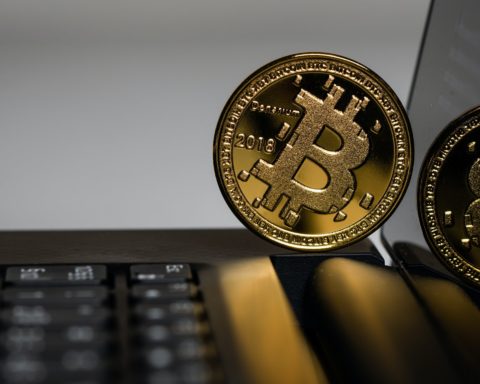Since the emergence of Silk Road eight years ago, the concept of darknet markets has remained the same. A darknet marketplace is a commercial platform found on the dark web where individuals can buy and sell products such as drugs, stolen credit cards, weapons, and cyber-arms, among other illicit goods, anonymously.
Following the model created by Silk Road, present-day darknet marketplaces are still characterized by their use of unidentified access, bitcoin payment with escrow services, and encrypted feedback systems.
In this article, we take a look at the top five biggest darknet markets in the history of the dark web.
Silk Road

Silk Road, founded in 2011 by Ross Ulbricht, was the first online darknet market. The dark web marketplace was once described as “the internet’s Wild West and the eBay of vice”. It was a haven for document forgers, gun runners, and drug dealers. Although Silk Road was only active for a little over two years, it kickstarted the black market on the dark web.
The Rise
Since it was operated under a hidden service, users were able to anonymously and securely browse the website without their traffic being monitored. Communication on the site was encrypted and anonymous and transactions were conducted using bitcoin.
Although Silk Road was launched in February of 2011, its development had started six months earlier. Initially, this dark web market offered a restricted number of new seller accounts. That meant that new sellers had to buy a new account during an auction. Eventually, Silk Road started charging a fee for every new seller account. Before it was closed by the FBI in 2013, Silk Road reportedly had registered 900,000 users and generated over $1.2 billion in sales.

Grab the Digital Privacy Toolkit
Get your FREE copy of the Digital Privacy Toolkit and discover the latest apps you can use to protect yourself against the expanding surveillance apparatus.
The Fall
Silk Road was shut down in October 2013 and its operator, Ulbricht, was arrested, which marked the end of Silk Road. It is believed the FBI infiltrated Silk Road and flipped most of Ulbricht’s close associates. They also used the identities of the associates to unravel Silk Road, which eventually led to the discovery of Ulbricht. He was convicted of eight different charges linked to Silk Road and was sentenced to life in prison without the possibility of parole.
AlphaBay

With Silk Road closed and its founder arrested, many thought there would never be another darknet market like it. That wasn’t the case, however, when AlphaBay came into the picture. The AlphaBay marketplace was launched in December 2014 and was one of the biggest dark web drug marketplaces before it was shut down in July 2017.
The Rise
After the first 90 days of being in operation, AlphaBay was able to register about 14,000 new users. The number steadily grew and by October 2015, the site had more than 200,000 users. At that point, it was the largest online darknet marketplace.
In May of the same year, AlphaBay announced the integration of the escrow system and digital contracts. It also started accepting other cryptocurrencies besides bitcoin, such as Monero. By the time the site was shut down, it had more than 400,000 users.
The Fall
AlphaBay grew to be ten times the size of Silk Road by July of 2017. The site had more than 369,000 listings and was processing about $600,000 – $800,000 daily transactions. AlphaBay’s demise was a result of operational security errors.
The founder, Alexandre Cazes – then 25 years of age and a Canadian citizen – was arrested in Thailand on July 5, 2017. Cazes would, later on, die while in custody in Thailand. The Justice Department in Thailand said he took his own life. Cazes had several charges against him such as identity theft, narcotics distribution, and money laundering, among others.
Wall Street Market

The Wall Street Market was considered the second-largest darknet market globally. The onion website was used to sell illegal products and services. Two weeks before the shutdown of Wall Street Market, the site’s administrators reportedly made away with $14.2 million worth of digital currencies from the accounts of their vendors and users in what is referred to as an exit scam.
The Rise
Wall Street Market, like other darknet marketplaces, was used for the buying and selling of illegal products. Payments were made using cryptocurrencies and the site had integrated an escrow system.
Wall Street became popular after Dream Market was shutdown leaving users scrambling to find another platform. What most users didn’t realize, was that Wall Street market was an exit scam. Before the shutdown, Wall Street stopped making payouts to vendors for completed orders. Instead, the funds collected were transferred into one BTC wallet and orders were never shipped. When users became suspicious, Wall Street put out a message that they were having technical difficulties and that any missing bitcoin would be returned. This was never to be.
The Fall
While Wall Street users were going through this turmoil, one of the moderators started blackmailing buyers and vendors who had shared unencrypted messages requesting for 0.05 bitcoin or else he would disclose their details to law enforcement. While it is not clear if the extortion attempts were successful, the moderator went ahead and posted the IP address and login details for the site’s backend on Dread, a Reddit-like community for dark web users.
It is believed that this exposure led to the takedown of the site and allowed law enforcement to make arrests of individuals who were believed to be behind Wall Street Market as well as vendors.
Hansa

After AlphaBay was shut down, the buyers and vendors of illegal products went looking for other darknet markets that could allow them to continue their illegal trade. Hansa was one of the alternatives that users moved to and it started seeing an increase in the number of users after AlphaBay went under. In fact, the Dutch police reported that the site saw an increase in the number of daily visitors which grew from 1,000 to 8,000.
The Rise
After AlphaBay was taken down, Hansa experienced increased traffic. On average, there were about 1,000 orders every day in response to about 40,000 ads. Hansa continued growing its footprint to over 1,765 vendors.
While most users saw Hansa as their go-to site for buying and selling illegal products, little did they know that the police were operating it undercover. The police collected information on both vendors and customers by recording data that came from the over 50,000 cryptocurrency transactions. It is believed that the police received a lot of information about the darknet market ecosystem from their undercover operation on Hansa.
The Fall
Once the police had gathered enough information, they took over the site. The Netherlands Police worked with Europol, Lithuania, Germany, and the US to gather the information that helped take down the site. The investigations also revealed that the two administrators running Hansa lived in Germany.
Dream Market

Dream shut down in April 2019 happened under unclear circumstances. Dream informed its users about the shutdown by informing them when it would happen. While commerce halted, users were still able to access their accounts and withdraw funds.
The Rise
Dream was in operations for six years by one tight-lipped admin known as ‘Speedsteppers’. Unlike Ulbricht, who constantly gave his views, Speedsteppers was able to keep everything on the down-low. Hence, the lengthy run of the Dream darknet market. The site’s popularity grew and by the time it was closing, it had hundreds of thousands of listing that generated millions of dollars every week.
The Fall
In April 2019, Dream users found a message informing them that the site was shutting down on April 30, 2019, and open on another site. One of Dream’s admin going by the name ‘Hugbunter’ claimed on Dread that the site had been held at ransom by a hacker for $400,000 and they had refused to pay. This wasn’t a complete surprise as two months before the actual closure, Dream had experienced several cyberattacks rendering the site inaccessible. Whether Dream was forced into shut down by law enforcement officers or not is a question that remains unanswered.






